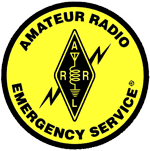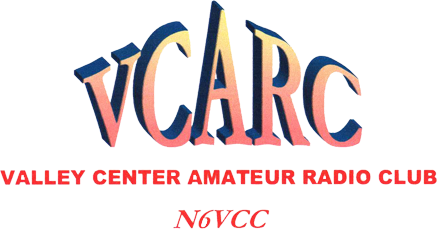Valley Center DMR
Loading the CodePlug on Your AnyTone AT-D878UV
Once you have customized you CodePlug you will want to load it to your AnyTone 878 radio. Here you will need your programming cable.
1. Turn OFF your radio if it is ON. Insert USB end of the cable into a USB port on your computer. The other end inserts into the double plug under the protective cover on the right side of the radio.
2. Exit the DMR program on your computer.
TIP: This doesn't ALWAYS need to be done, but there appears to be some sort of bug in the software which sometimes requires it.
Start the computer program and let it fully load. Turn ON your radio and let it completely start.
3. Select "Set" on the top menu bar and again select "Set COM" from the dropdown menu. ***CRITICAL*** DO NOT SELECT "Set Initialization". At this point you will hate life if you do.
4. Click on the correct COM Port from the dropdown menu and click OK.
TIP: If more than one COM Port shows up you may need to go to "Device Manager" in Windows to determine which one it is.
5. Click "Program" on the top menu bar and select "Write to Radio" from the dropdown menu.
6. Click OK to confirm the write operation.
7. Another sub menu appears called "Read or Write Objects". FIRST TIME programming the radio select BOTH "Digital Contact List" and "Other Data". Click OK and the Code Plug should start being written yo your radio. All subsequent Write operations will be "Other Data" only.
First time will take a while since the Contact List is being written, and it is BIG. After that it only takes a few seconds since you will only be writing the "Other Data".
TIP: If the program fails to write to the radio do the following:
A) Turn off the radio and EXIT the program (no need to unplug the cable from the radio);
B) Restart the program and wait for it to fully load;
C) Turn on the radio and let it fully start;
D) Re-select the COM Port via "Set" and click OK (click on the COM Port and OK even though it may already be selected!!!);
E) Write to radio, etc.
8. Wait until the radio resets itself BEFORE removing the programming cable. It must be unplugged from the radio in order for it to work.
There are several additional adjustments you may want to make to the radio at some point:
GPS (How to turn the GPS ON and OFF)
The GPS is initially turned OFF by the programming software (can be set differently if desired). This takes into consideration that you most likely will not be using the GPS function very often and that it uses a LOT of battery power. It's easy enough to toggle on and off from the radio itself. It will remain in whatever position you set it until you set it differently.
1. With the radio turned ON, momentarily press the green MENU button located above the P1 button on the front. Toggle the bottom of the NAVIGATION button located in the center between the P1 and P2 buttons.
2. Continue to toggle the MENU button until "GPS" is selected (probably 4 times).
3. Momentarily toggle the SELECT button (the green one that previously was called MENU) to select GPS.
4. Toggle the same NAVIGATION button until "GPS ON/OFF" is selected and toggle the SELECT button.
5. On the next screen you can again toggle the NAVIGATION button to select either "GPS OFF" or "GPS ON". Select "GPS ON" to turn on or "GPS OFF" if it is already on and you want it off.
6. Once you are done toggle the BACK button (the RED one above the P2 button) a few times to exit out and back to normal operation.
VFO Bandwidth (How to change from NARROW to WIDE band)
The VFO bandwidth seems to default to 12.5kHz (Narrow Band). I have as of yet not found a way to set this to anything else in the software, like 25kHz (Wide Band). Therefore, it can easily be done on the radio itself. Narrow band is fine as long as the "other" station is also using narrow band. Otherwise, much of the signal cannot be heard, especially if you're trying to decode digital signals like SSTV (Slow Scan TV).
Please note the following VFO band width adjustment remains in place until you either change it back or install a new code plug. When that occurs simply follow these instructions again.
1. Press the P2 button to enter into VFO mode on the primary channel (A channel). It will show "VFO A" and some frequency below it.
2. Press the MENU button and select SETTINGS.
3. Click down to CHAN SET and select.
4. Click down 10 times (approximately) and select BAND WIDTH;
5. Click down and select WIDE;
6. Press BACK button a few times to exit and return to normal operations;
7. Please note that "VFO B" Band Width cannot be made WIDE. It remains NARROW (12.5 kHz)...only "VFO A" can be made WIDE.
What the Buttons Do (Initial Setup...You can change these at will)
Please refer to your Operating Manual as to the names and locations of the various buttons on the AnyTone AT-D878UV radio. This is located on pages 9 and 10. Only the customizable buttons will be discussed. You can change the initial functions to whatever you want from either the radio or the software. I recommend the software. This is done by selecting "Optional Settings" followed by "Key Function" on the sub-menu.
PF1 Short Key: Digital Monitor ON or OFF. You can monitor both A and B channels or primary;
PF2 Short Key: APRS Type Switch. Various APRS functions;
PF3 Short Key: Power levels. Toggle between Turbo, Hi, Mid, Low;
P1 Short Key: Switch Main Channel. Switch between the A channel and B channel;
P2 Short Key: V/M. Switch between VFO mode and Memory mode on the MAIN channel;
PF1 Long Key: Reverse. Switch Transmit and Receive repeater frequencies;
PF2 Long Key: APRS Set. APRS function and parameter set;
PF3 Long Key: GPS Information. Check GPS position information;
P1 Long Key: FM. Turns On and Off the FM broadcast radio;
P2 Long Key: Voltage. Displays battery voltage.
Set Up the Radio for BlueTooth
1. From the top menu bar on the main page select Tool;
2. Select Options from the dropdown menu;
3. A sub-menu opens. Check the BlueTooth check box;
4. Select OK;
5. Follow the BlueTooth manual to pair, etc. the radio with your pairing device. If you haven't already downloaded it you may do so by clicking HERE.
Contact List (How to update your radio's Contact List)
You may periodically want to download a more current Contact List to your radio. The Contact List incorporated with the Code Plugs you download will most likely NOT be the latest version. This does not adversely affect the operation of the radio, but new contacts are being added daily. Might be good to download and update every several months or so. This is a fairly large file, so be patient.
1. Using Chrome or FireFox (Bing and IE don't work properly) go to radioid.net at the following IP address: https://www.radioid.net/database/dumps . If your browser says it's not "safe", don't worry...it is;
2. Click of user.csv and it should download to your download folder. This is a large file;
3. Attach the programming cable to the radio and computer and select Set from the top menu bar then Set COM as you did before when programming;
4. Select Tool from top menu bar then select Import from the dropdown menu;
5. The Import sub-menu appears. Select "Digital Contact List" from the left side of the menu;
6. In the File Explorer which just opened go the folder where you downloaded the user.csv file (probably the Downloads Folder) and select the latest user.csv file you just downloaded, then click "Open".
7. The "user.csv" file's location will appear in the "Digital Contact List" box near the center of the Import sub-menu;
8. Click Import at the bottom of the Import sub-menu. The Contact list to load to your SOFTWARE;
9. Follow the previously described instructions on loading the Contact list to your radio. You may also reload the "Other Data" as well, but you only need to load the Contact List.
We will be adding more stuff as time goes with programming discussions during the monthly VCARC meetings. So, be sure to attend.

